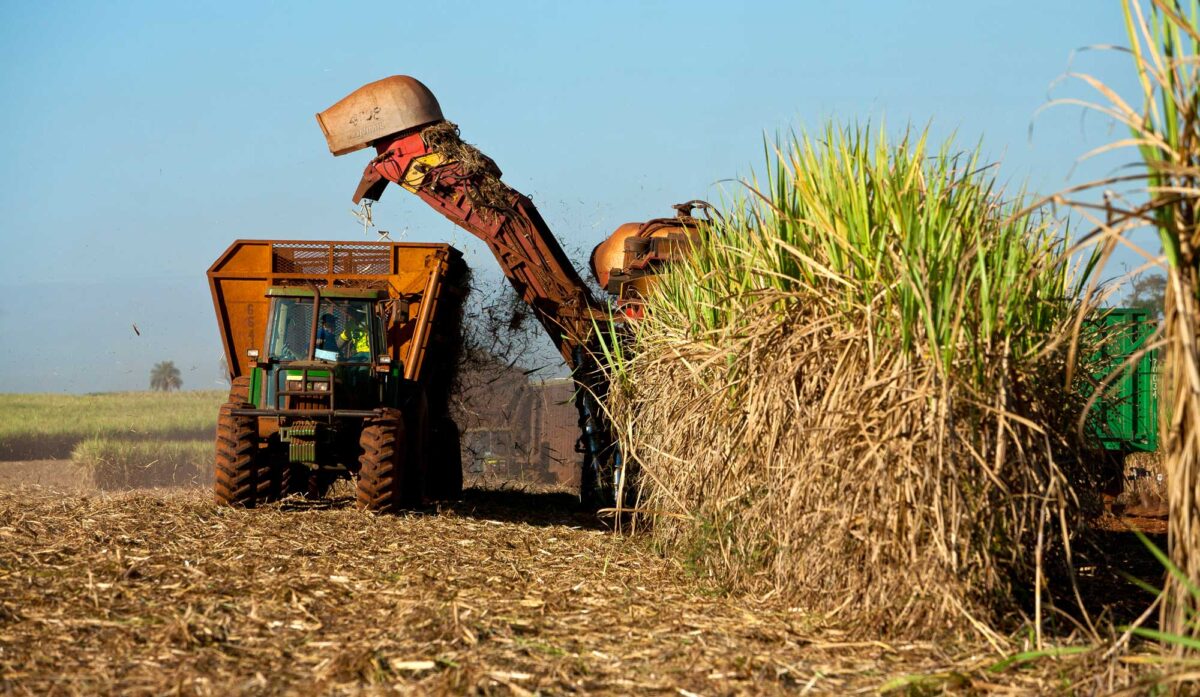Page snapshot: Introduction to sugarcane cultivation, from planting to harvesting.
Topics covered on this page: Introduction; Planting; Ratooning (stubble crops); Burning; Harvesting; Post-harvest processing; Resources.
Credits: Funded by the National Science Foundation. Any opinions, findings, and conclusions or recommendations expressed in this material are those of the author(s) and do not necessarily reflect the views of the National Science Foundation. Page by Elizabeth J. Hermsen (2023).
Updates: Page last updated March 14, 2023.
Image above: A sugarcane harvester cutting sugarcane and delivering it into a trailer pulled by a tractor. Photo by Jonathan Wilkins (Wikimedia Commons, Creative Commons Attribution-ShakeAlike 3.0 Unported license, image cropped and resized).
Introduction
Today, sugarcane is produced in tropical regions around the world. The top producers are Brazil and India, followed by China, Pakistan, Thailand, and Mexico. Sugarcane cultivation and processing have been mechanized in some regions, although manual cultivation continues, at least in part, in others. This page goes through the basic steps in sugarcane cultivation, from planting to harvest.
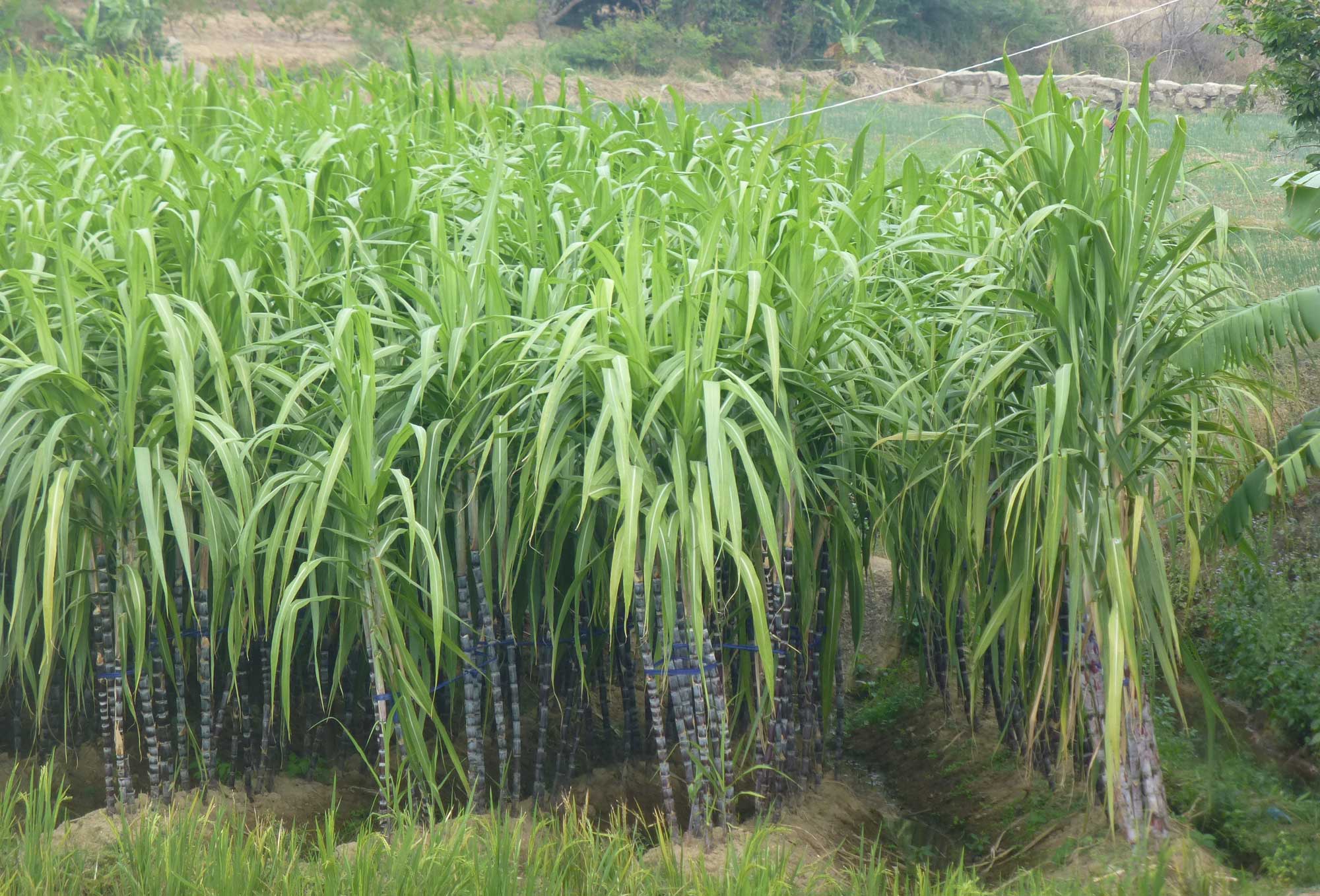
Sugarcane patch, Fujian, China. Photo by Vmenkov (Wikimedia Commons, Creative Commons Attribution-ShareAlike 3.0 Unported license, image cropped and resized).
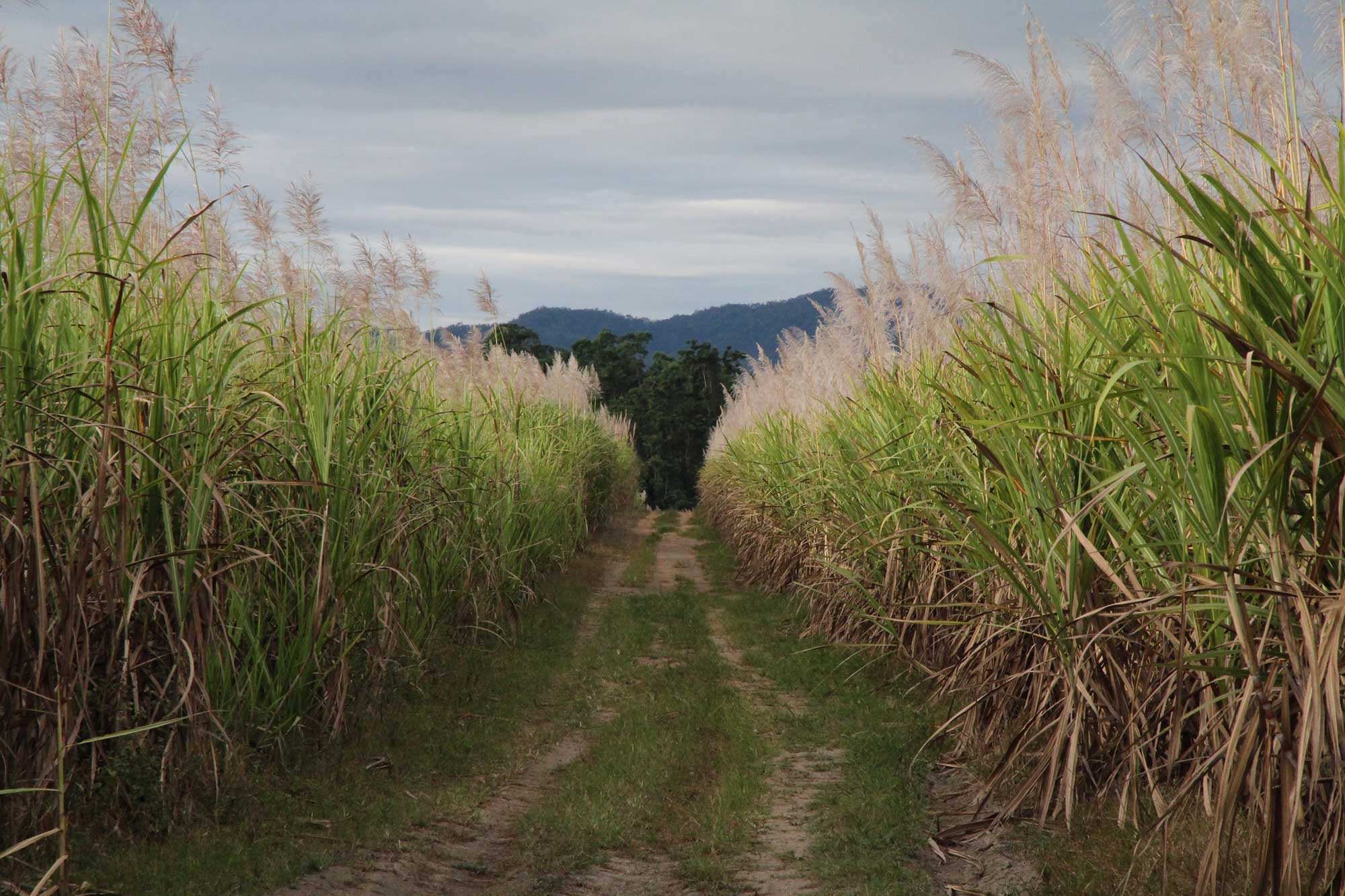
Sugarcane field, Queensland, Australia, 2011. Photo by Jenny Mealing (flickr, Creative Commons Attribution 2.0 Generic license, image resized).
Planting
Unlike cereal crops, which are grown from seed, sugarcane is grown from whole canes or from pieces of stem called billets or setts. Canes or billets may be placed horizontally in shallow pits, furrows, or trenches in the ground, covered with soil, and fertilized. They sprout and are allowed to grow and mature for at least a year before they are harvested. Preparation of fields and planting may be done by hand or with tractors and a cane planter.
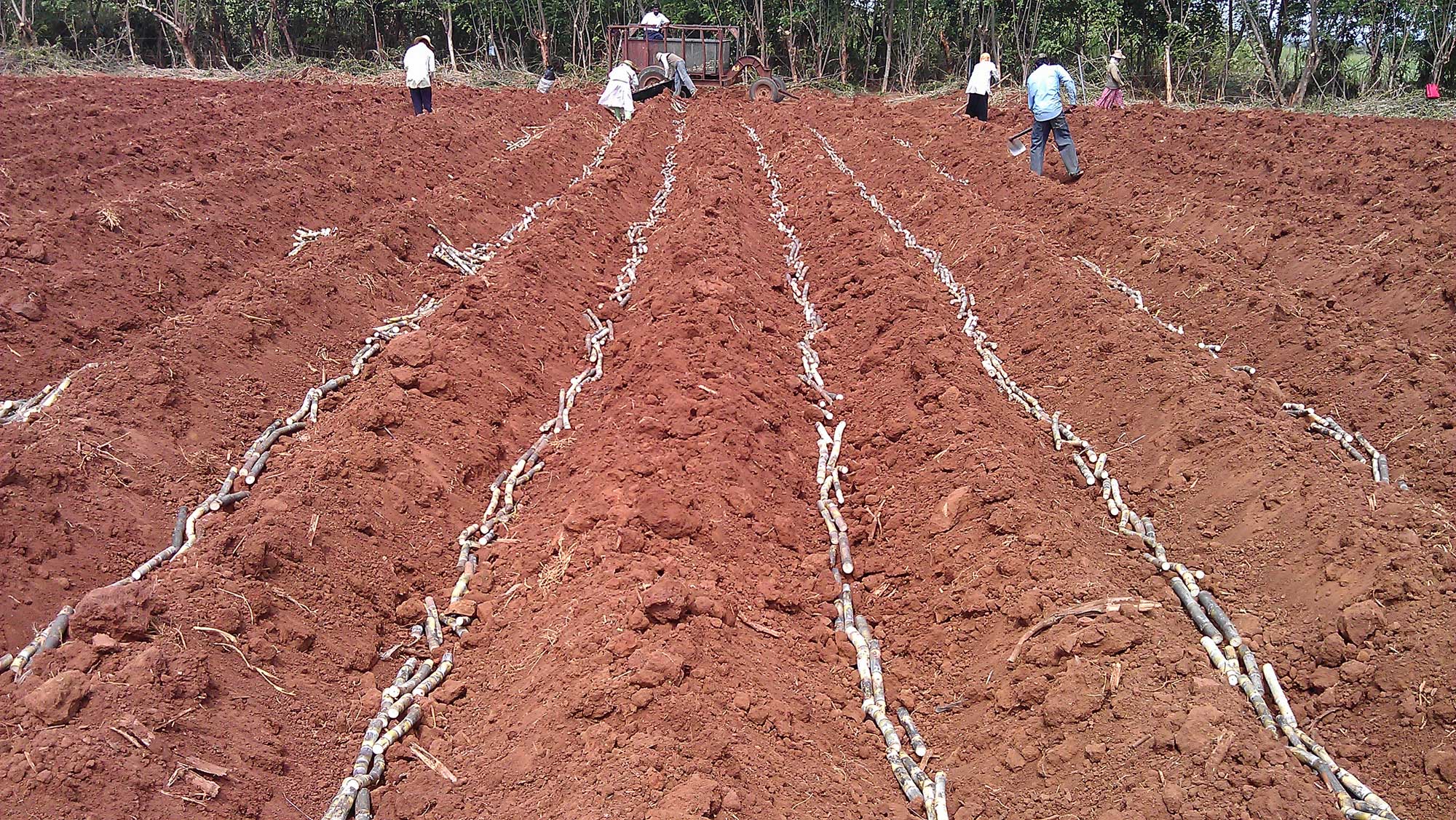
People planting billets in furrows, Sevangala, Sri Lanka, 2012. Photo by Ebaran (Wikimedia Commons, Creative Commons Attribution-ShareAlike 3.0 Unported license, image resized).
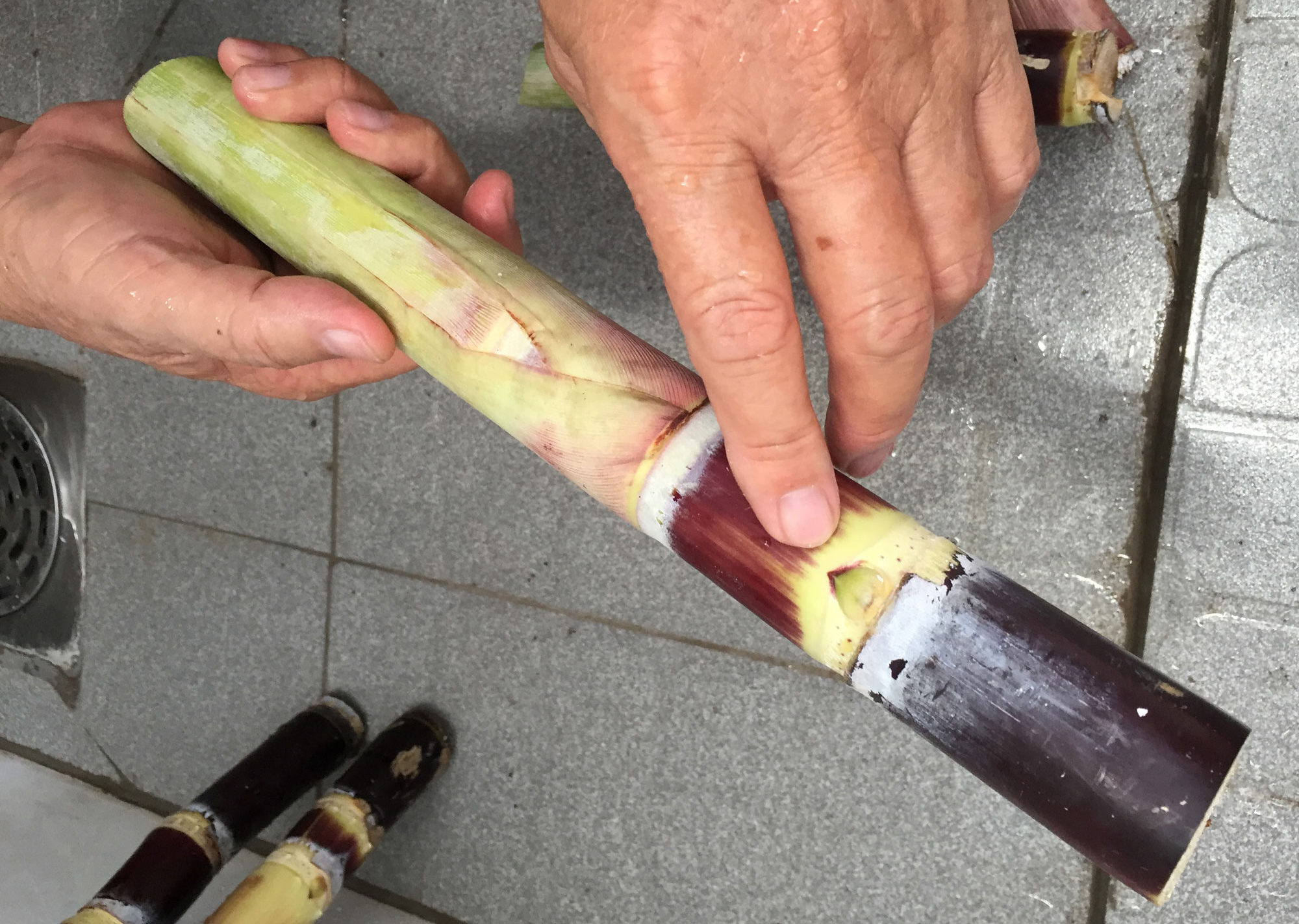
A piece of sugarcane stem. The structure near the person's index finger is a bud. If this piece of stem were planted in the ground, it would sprout a new stem from the bud, which is an immature branch. Photo by Zenyrgarden (Wikimedia Commons, Creative Commons Attribution-ShareAlike 4.0 International license, image cropped and resized).
Planting in Louisiana, U.S.A., 2020, using old machinery. Original description: "Sugar Farms in Gibson Louisiana starting planting season. Sugar cane is being cut by a 1972 Thompson Machinery cutter and loaded with an old Allis Chalmers tractor converted to cane loader by Thompson Machinery. Video also shows rows being opened and then cane being planted by mechanical planters. Finally, the cane is covered, packed and fertilized." Note: This video has no narration. Video by Aerial Ag via YouTube.
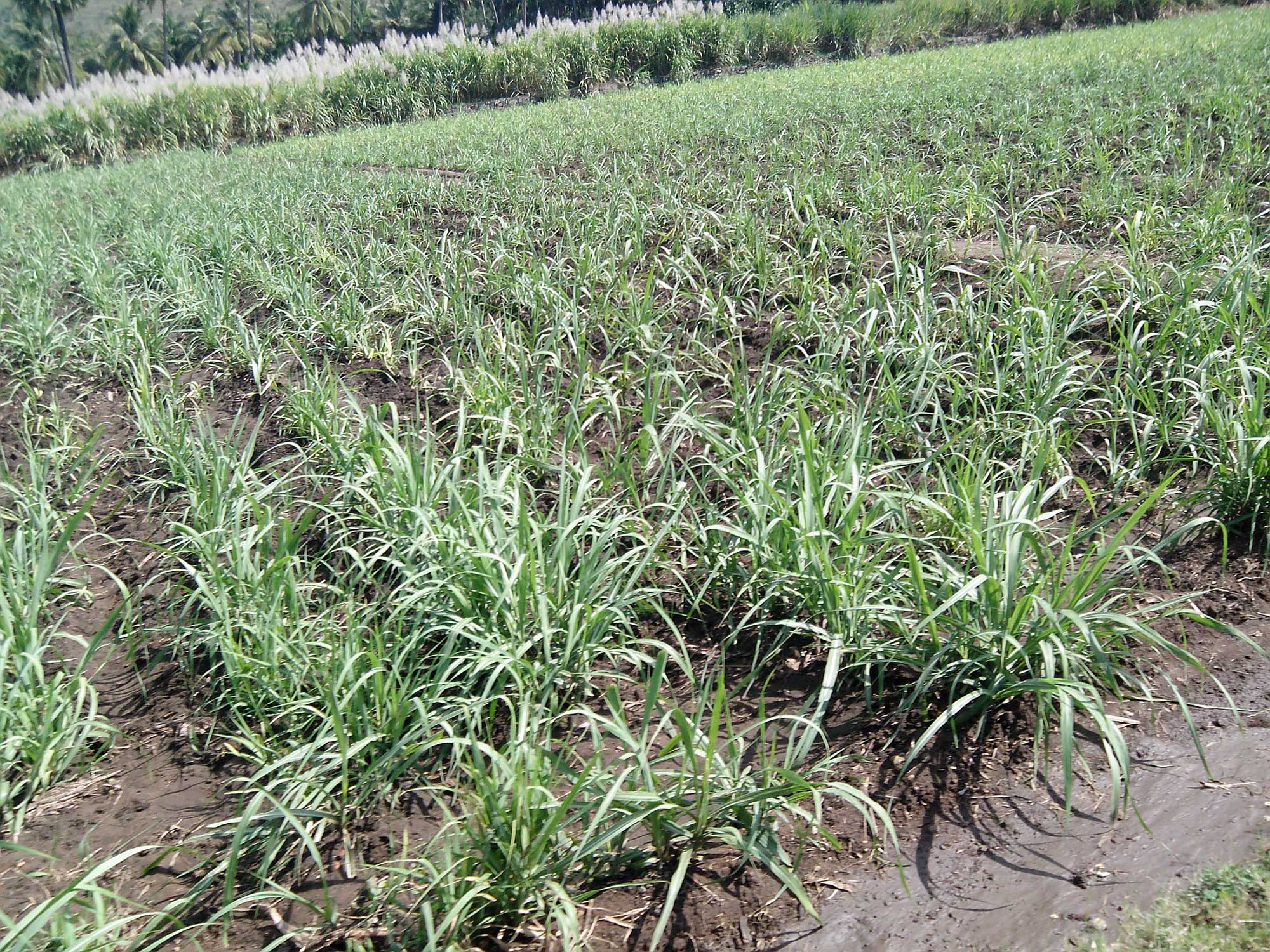
Sugarcane plants that have sprounted in a field, about two months old. More mature plants can be seen in the background. Photo by Thamizhpparithi Maari (Wikimedia Commons, Creative Commons Attribution-ShareAlike 4.0 International license, image resized).
Burning
Sugarcane is ready to harvest when it has stopped growing and maturing (meaning that it has accumulated the greatest amount of sucrose that it can in its stem). In some regions, sugarcane fields are burned before or after cutting the cane. Burning removes the dead leaves from the sugarcane stalks and has the added benefit of removing dead plant matter (called trash) from the sugarcane fields. Burning can be a health hazard for those living near sugarcane fields, who inhale the smoke.
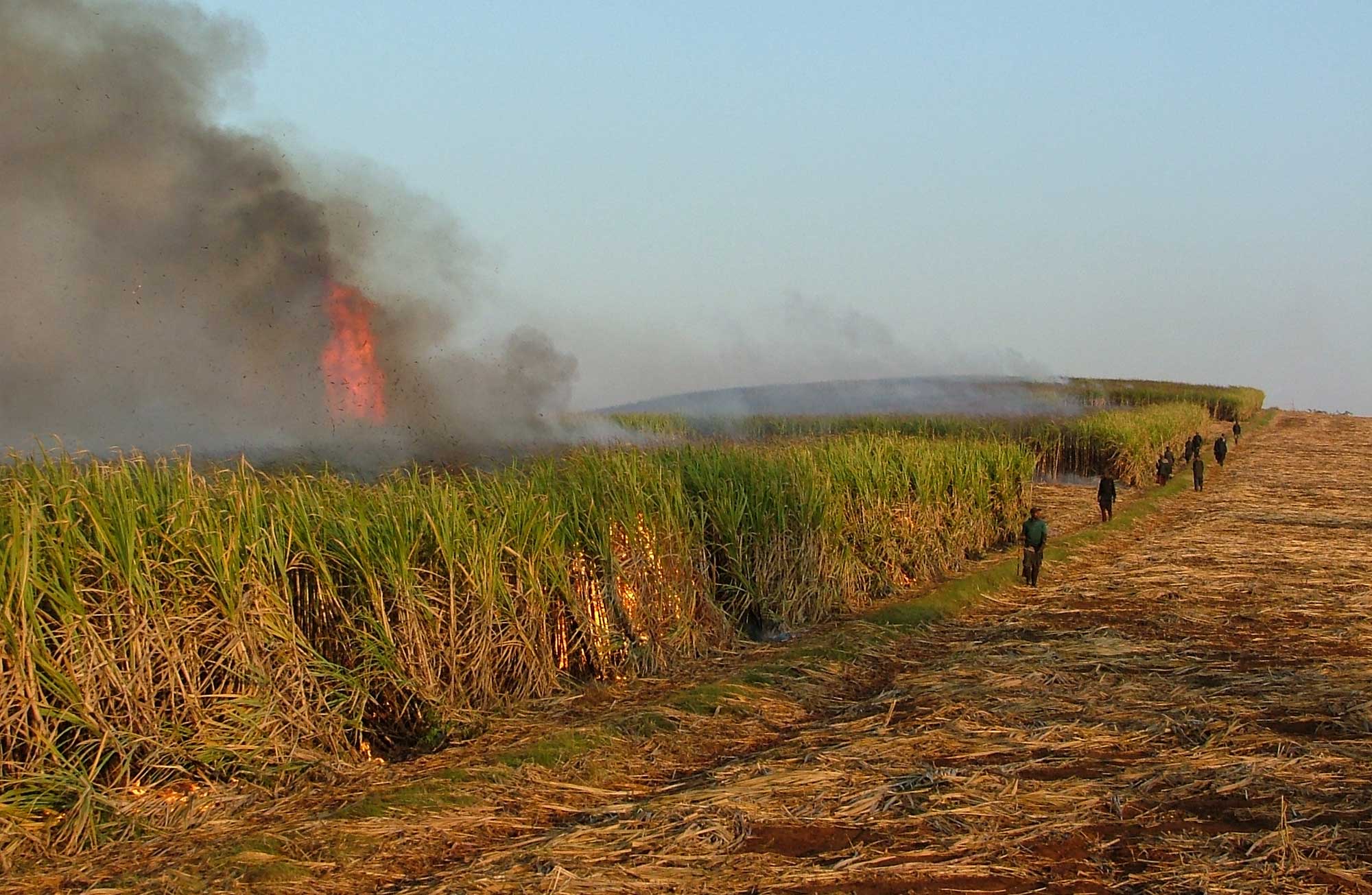
Burning a sugarcane field, South Africa, 2005, Photo by Marius140% (Wikimedia Commons, Creative Commons Attribution-ShareAlike 4.0 International license, image cropped and resized).

Burning a sugarcane field in Australia, 2010. Photo by Rob and Stephanie Levy (flickr, Creative Commons Attribution 2.0 Generic license, image cropped and resized).
Harvesting
Harvesting may be done by hand or with machinery. If done by hand, laborers cut stalks near the base using a blade. If necessary, leaves and shoot tips are also removed before the sugarcane is loaded on a wagon for transport.
Harvesting by machine may be done in a few ways. In one method, a machine first cuts the canes near the base, leaving them laying in rows in the field. The cut canes are then loaded into trucks by sugarcane loaders, machines with claw-like arms for grabbing sugarcane. (Sugarcane cutting and loading using this type of machinery is shown in the video above on this page.) Another type uses a sugarcane harvester—sometimes called a combine harvester—that chops up the cane before expelling it into a wagon or truck. This type of harvester can be used without burning the crop.
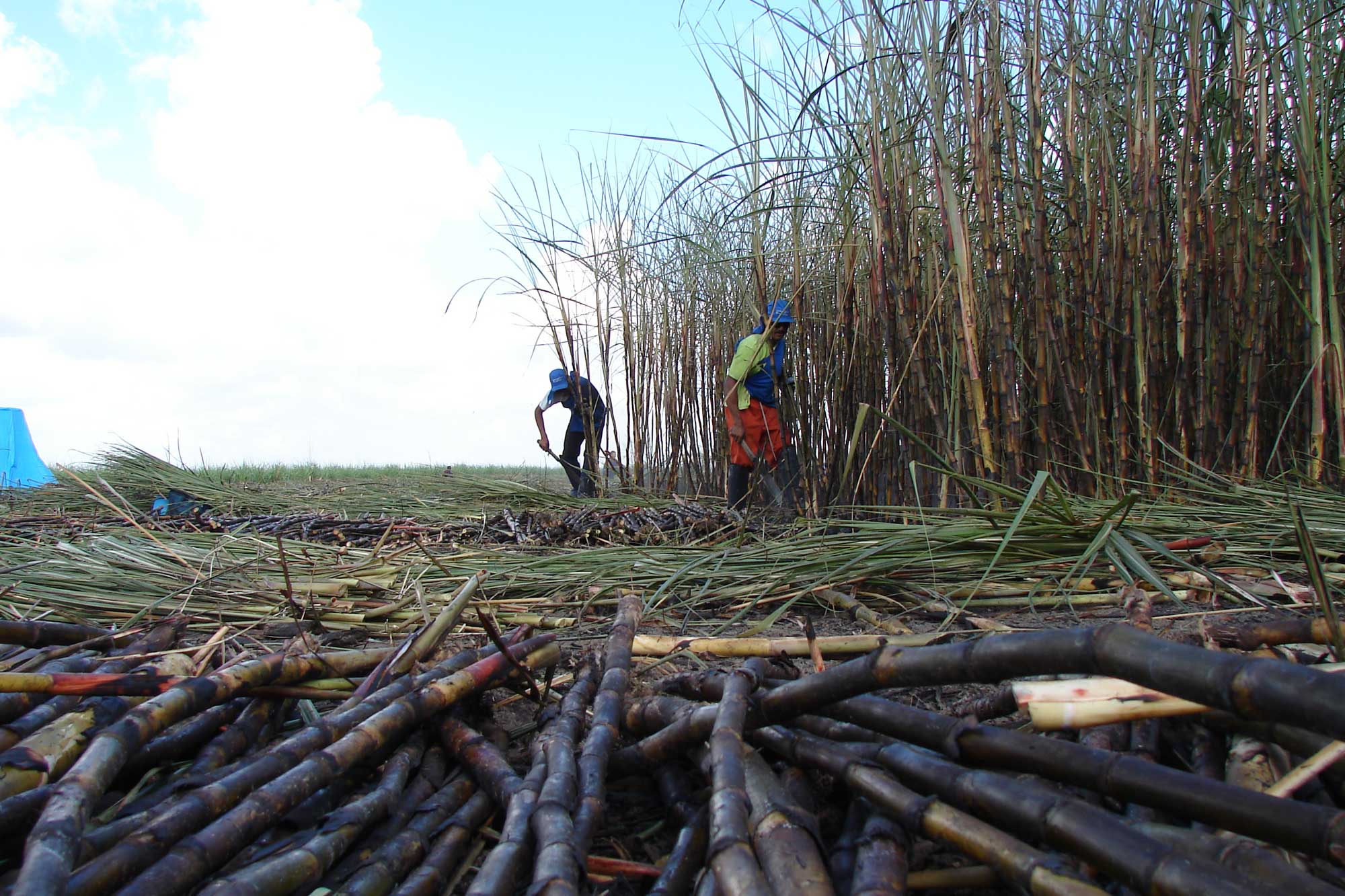
Workers harvesting burnt sugarcane by hand, Brazil, 2006. Photo by Cícero R. C. Omena (flickr, Creative Commons Attribution 2.0 Generic license, image resized).
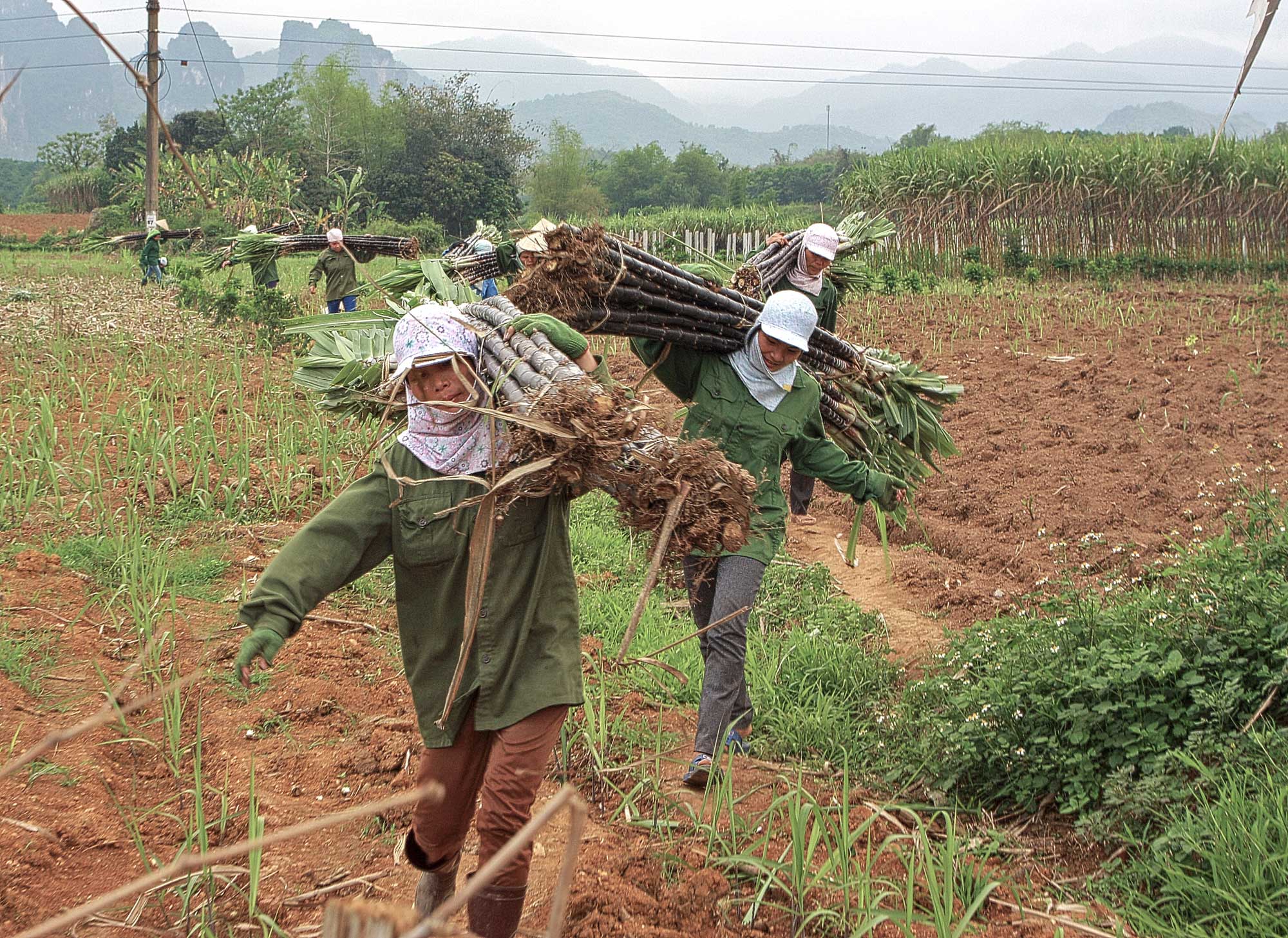
Women carrying bundles of sugarcane, Vietnam, 2014. Photo by Idan Robbins (Wikimedia Commons, Creative Commons Attribution-ShareAlike 4.0 International license, image cropped and resized).
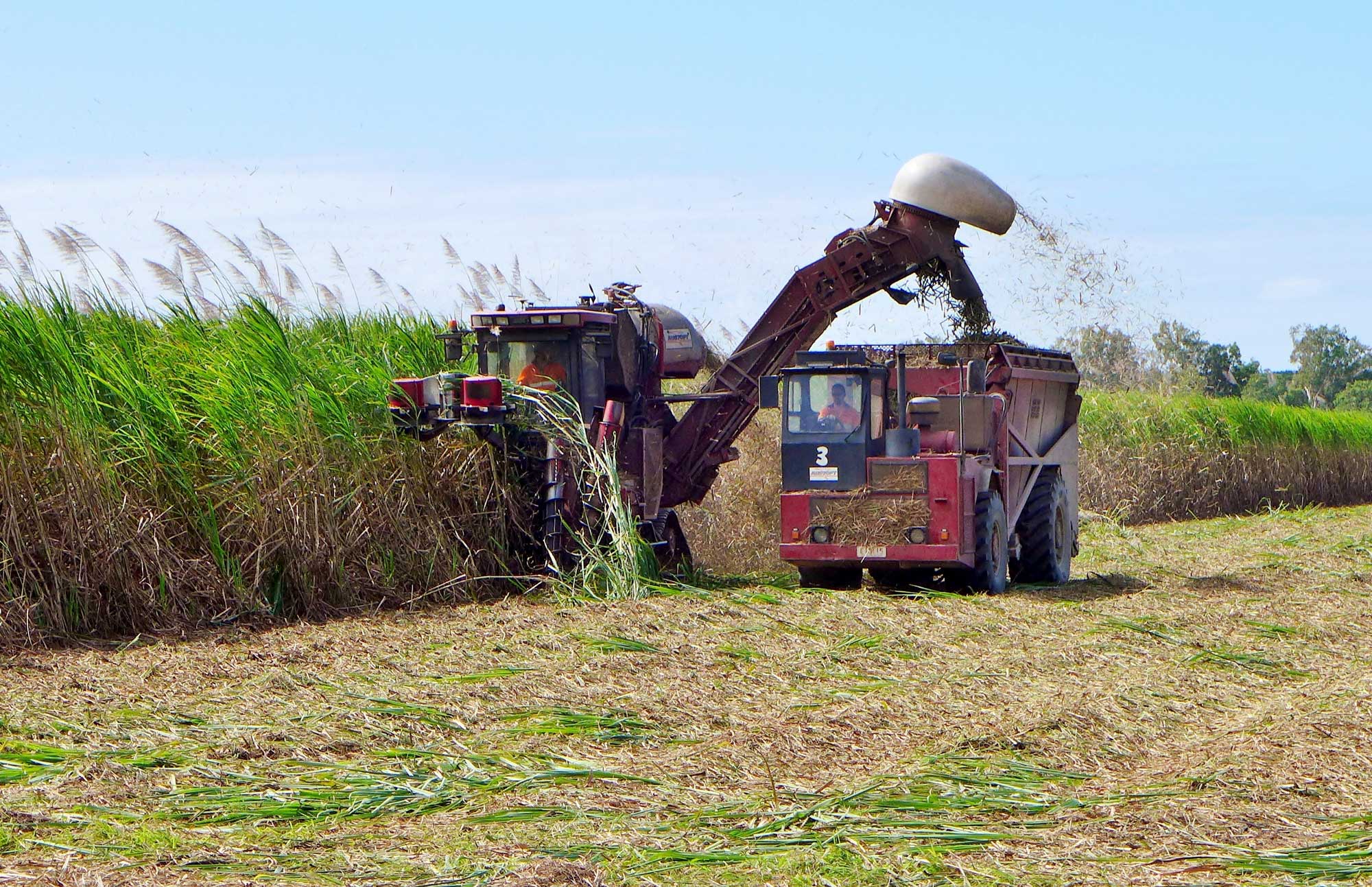
Sugarcane harvester, Australia, 2015. Photo by Bahnfrend (Wikimedia Commons, Creative Commons Attribution-ShareAlike 4.0 International license, image cropped and resized).
Ratooning (stubble crops)
In some cases, after sugarcane is harvested, the remains of the cane are left undisturbed in the ground. The sugarcane is then allowed to resprout so that multiple crops can be grown without replanting. These additional crops are known as ratoons or stubble crops. One or more ratoon crops may be harvested from a single planting, depending on local conditions. Unfortunately, ratoon crops are lower-yielding than the first crop, with each crop of ratoons lower-yielding than the last. Thus, fields need to be replanted periodically.

Illustration of the practice of ratooning. After the first harvest, the sugarcane is allowed to resprout from buds to produce a second harvest. Source: Modified from figure 2 in Belarmino dos Santos et al. (2019) Scientia Agricola 79: e20200309 (Creative Commons Attribution 4.0 International license, image cropped, resized, and relabeled).
Post-harvest processing
After sugarcane is harvested and transported to the mill, it is typically shredded and then crushed with a roller to extract the juice. The juice must be processed quickly so that it does not spoil. The juice is primarily converted into raw sugar (a non-food-grade form of sugar that can be stored or shipped elsewhere to be refined) or fermented to make biofuel.
The fibrous plant material left over after sugarcane juice is extracted is called bagasse. Bagasse is often burned to produce heat or energy in the processes of sugar milling and refining and biofuel manufacture.
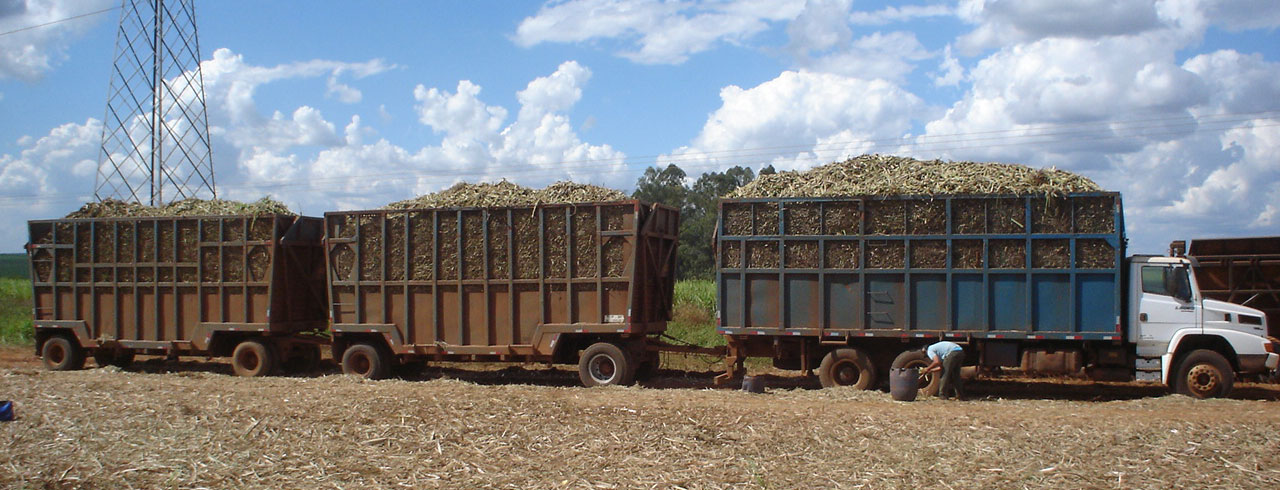
Truck and trailers full of harvested sugarcane, São Paulo, Brazil. Photo by Edrossini (Wikimedia Commons, public domain).
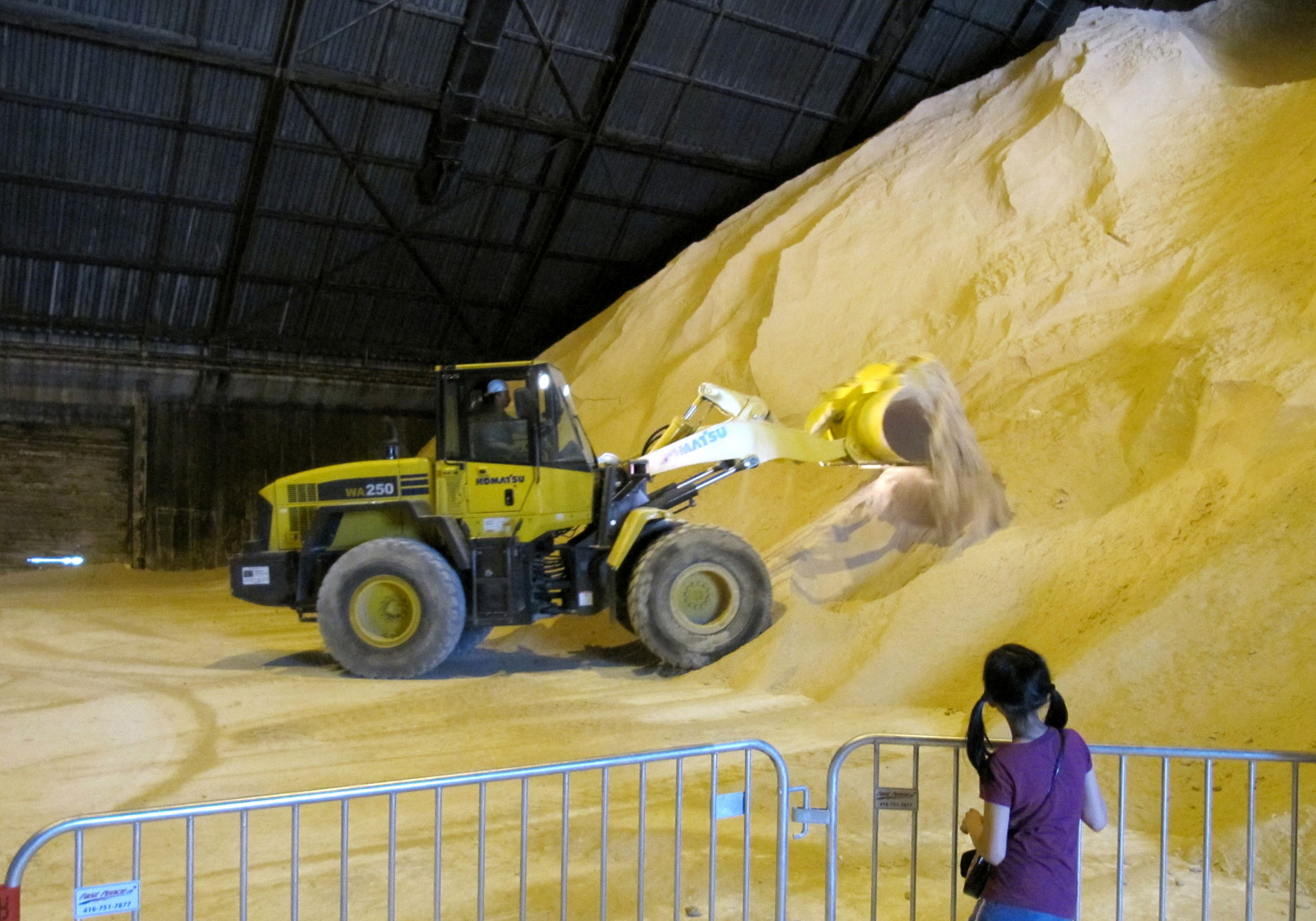
Raw sugar at the Redpath Sugar Refinery, Toronto, Canada, 2010. Photo by Loozrboy (flickr, Creative Commons Attribution-ShareAlike 2.0 Generic license, image cropped and resized).
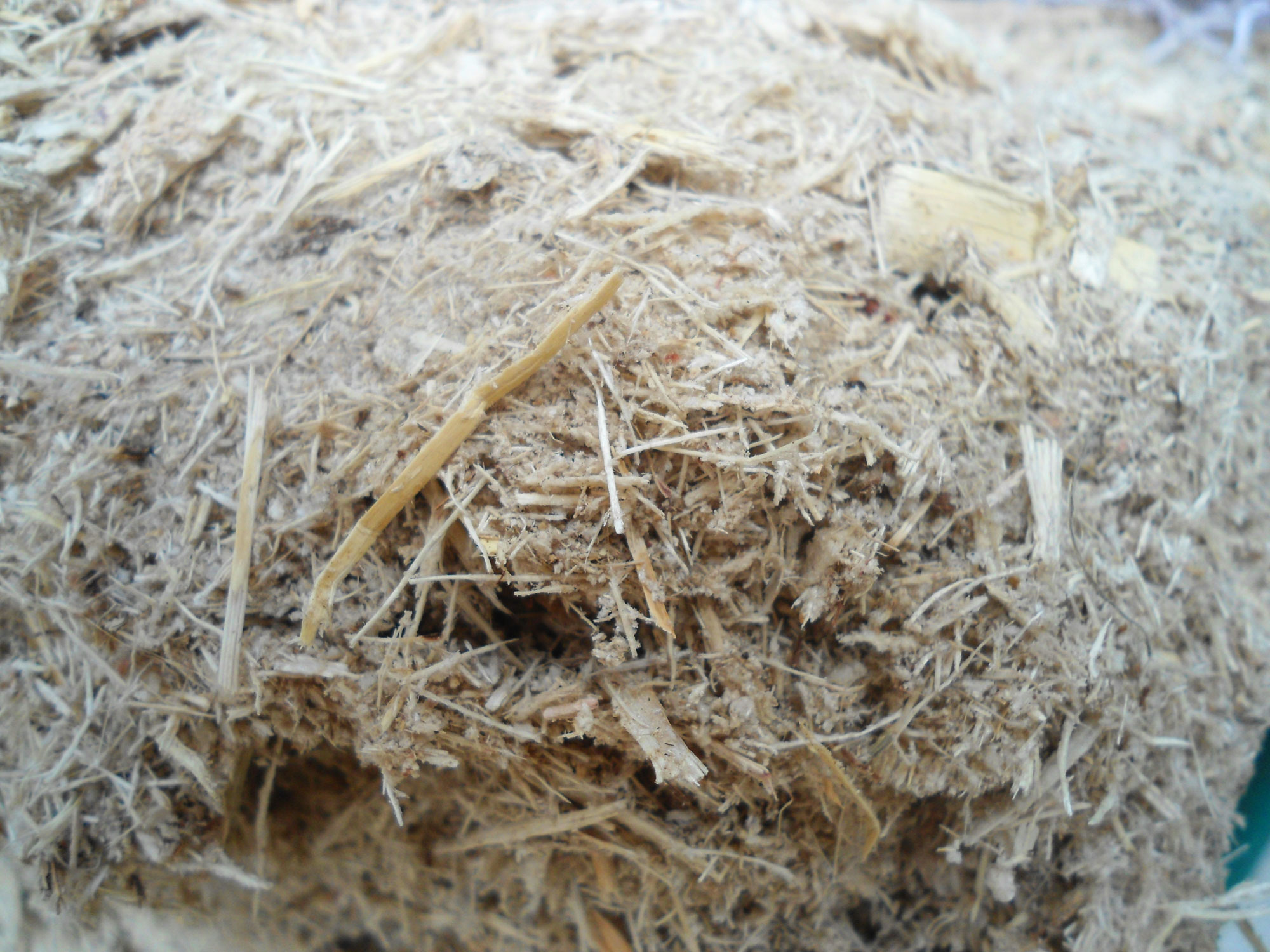
Sugarcane bagasse. Photo by Anna Frodesiak (Wikimedia Commons, CC0 1.0 universal/public domain dedication).
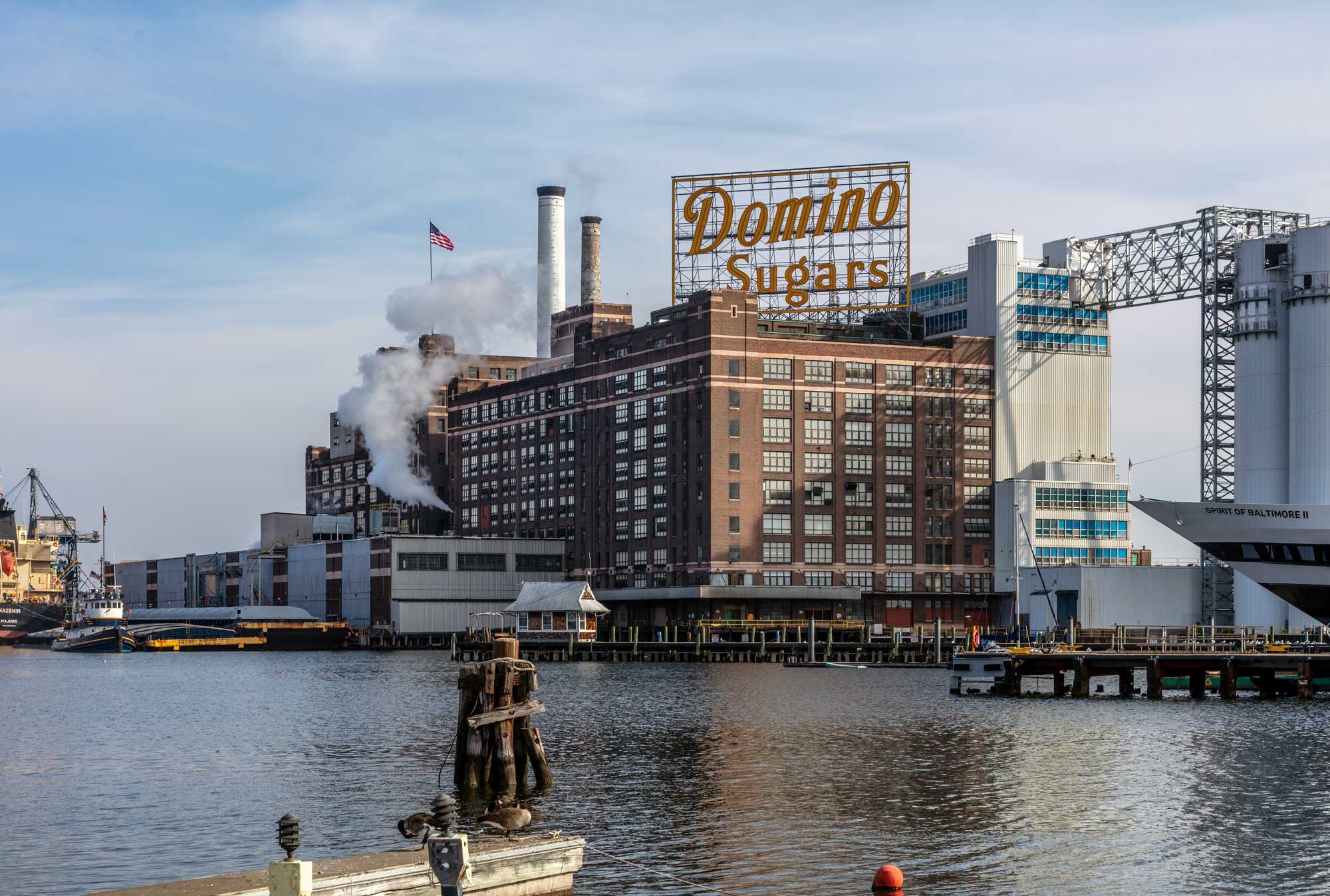
The Domino Sugar refinery in Baltimore, Maryland, U.S.A. Photo by Acroterion (Wikimedia Commons, Creative Commons Attribution-ShareAlike 4.0 International license, image resized).
Resources
Articles
Benedict, L. F. 2005. Planting sugarcane: Whole stalks versus billets. LSU AgCenter, May 31, 2005. https://www.lsuagcenter.com/portals/communications/publications/agmag/archive/2001/fall/planting-sugarcane-whole-stalks-versus-billets
Books
Hogarth, M., and P. Allsopp (eds.). 2000. Manual of canegrowing. Fergies Printers, Brisbane. Free online version: https://elibrary.sugarresearch.com.au/handle/11079/15541
Levetin, P., and D. S. McMahon. 2016. Plants and Society, 7th ed. McGraw Hill Education, New York.
Simpson, B. B., and M. C. Ogorzaly. 2001. Economic botany, plants in our world, 3rd ed. McGraw Hill Higher Education, New York, New York.



